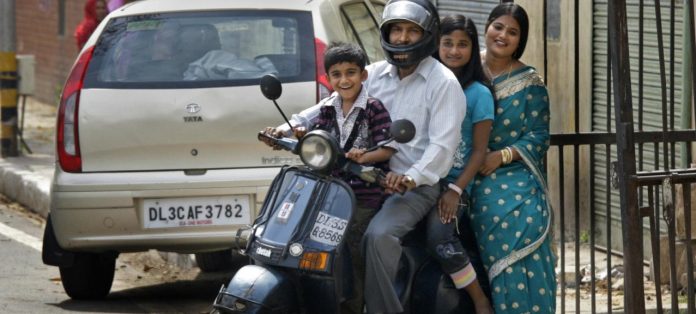- How often have we heard that the Indian middle class is the fulcrum of the country undertaking the majority of work adroitly shouldering the expected growth in a desired manner? That the increasingly aspirational society means the bulwark category of middle-class will have to keep looking up for opportunities to not only grow themselves but also contribute handsomely to helping the nation grow too. Now that the Budget presentation is fast approaching, the middle class forming a considerable group paying the taxes honestly will be in focus. And it is quite natural for them to be anxious as well as hopeful of some good news coming to their way vis-à-vis increase in the tax rates or cut in the tax rates. So much depends on the income tax component, you see.

PC: D. K. Srivastava
- As the tax-paying citizens anticipate what could be in store for them, it made an interesting read when the Union Finance Minister recently said that she is from the middle class and therefore identifies with it. With her fifth budget speech scheduled on February 1, she pointed out that the Union Government had not levied new taxes on the middle class. Explaining further, she mentioned that it prioritized urban infrastructure such as metro projects. Given India’s narrow income tax base, middle-class aspirations and anxieties often come into focus ahead of the budget. Let’s look into what constitutes our tax base and how large it is. Thinktank PRICE pegs middle-class households as ones that earn an income of Rs 5-30 lakh a year.
- Note that the figures are roughly in line with what tax data shows. In 2018-19, on an admittedly narrow individual income tax base of about 56 million returns filed, individuals with income in the range of Rs 5-25 lakh numbered around 19 million, or 34%. Needless to mention the data on the tax base is out of sync with consumption patterns, which suggests that the potential size of the middle class is much larger. Let us look at how investments in public infrastructure reverberate with the ease of living standards for the middle class. Mind you, there’s a mismatch between what different levels of government show as investment and public perceptions about their quality of life. Plenty of anecdotal evidence contrasts the statement.

PC: Khakimullin Aleksandr / Shutterstock.com
- Indeed, an increasing proportion of the middle class relies on the private provision of basic services such as transport, healthcare, and education. This trend leads back to questions about the tax base even as the middle classes exit and move towards a private provision of basic services leading to an adverse effect on the inclination to pay taxes. Almost half of India describes itself as middle class, a phenomenon that’s sharper in urban areas. Poor urban governance architecture not only limits the impact this class can have on politics but also makes it harder for individuals to cross the Rs 5 lakh income threshold. Undoubtedly, the middle class has benefitted from liberalization and as such, needs to grow faster to realize its true potential. The Government should pragmatically and with fiscal prudence aid the growth.






